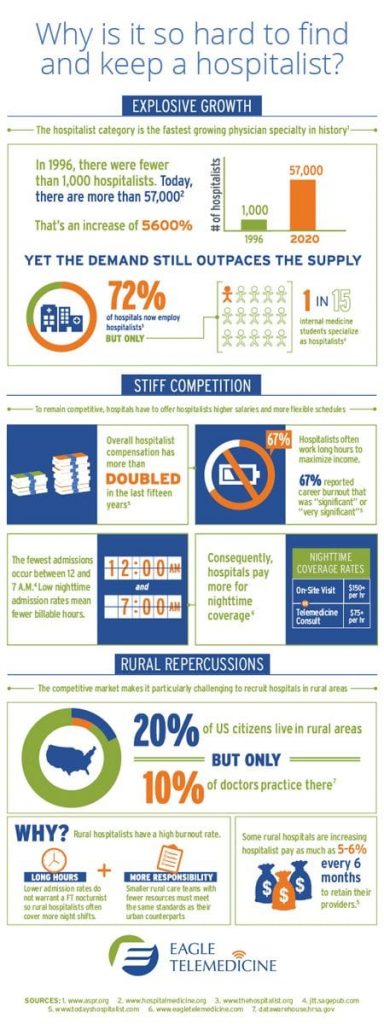Why is rural hospital staffing so difficult?
Physician shortages impact hospitals and patients across the country, but rural hospital staffing is even more difficult. These hospitals depend on general practitioners, like hospitalists and nocturnist, to fill the gaps in coverage. Factors are conspiring to make the hunt for hospitalists even more challenging:
- Growth: Demand continues to outpace supply
- Competition: Salaries are rising
- Repercussions: Turnover is increasing
Take the first step toward a solution. Consider telemedicine coverage.




